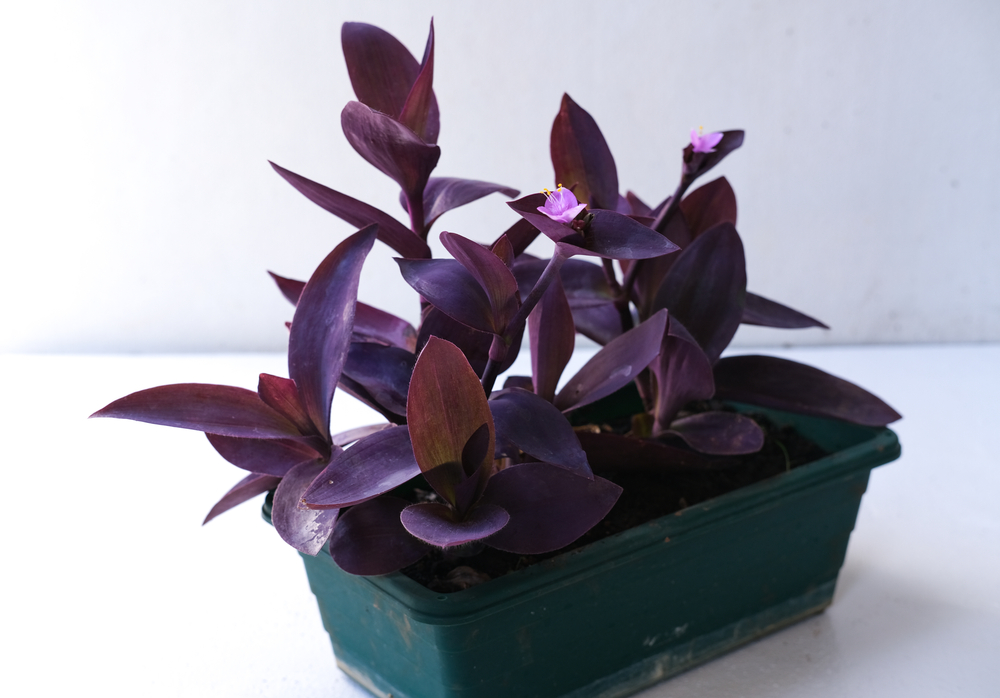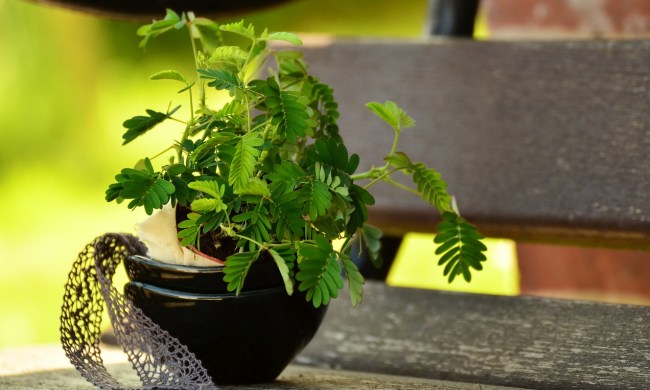We all love a gorgeously green and luscious plant, but sometimes it can get a little boring when everything in your yard or home collection is just green. Well, we’ve found the perfect, purple plant for those looking to spice up their landscaping. The purple heart is a versatile and unconventional plant that’s sure to start conversations and add a pop of color to your garden.

What is a purple heart?
Native to Mexico, the purple heart plant is desired for its leaves and its flowers. Surprisingly enough, they’re both a brilliant shade of purple. The flowers range from deep purple to pink, while the leaves are almost black with lighter, silvery purples running through. The three-petaled flowers bloom in the warmer seasons, and these plants can be grown indoors and outdoors. Many gardeners say it’s an excellent ground cover. While it’s considered invasive in some countries, it isn’t in the United States. Because of this, many gardeners grow this plant outdoors as a border plant. It’s a fast grower and an ideal way to add some contrast to your landscape design. Just remember that this fast-growing plant will need to be pruned to ensure it doesn’t take over the rest of your plants.
When the purple heart plant matures, it can grow up to 14 inches tall. Usually, it grows 16 inches wide but has been known to grow up to 5 feet wide in certain conditions. If you’re interested in growing it outdoors, it’s hardy to zones 7 to 10 and is a temperate and tropical plant.
Care tips for Purple heart
This plant is truly a low-maintenance plant. You’ll likely have to spend less time with this plant than you will with others. It’s hardy, grows quickly, and rewards you with pretty purple leaves and adorable little flowers. What’s not to love? However, to ensure this plant can live its best life, check out these tips.
Water
This plant is considered drought tolerant; however, we recommend you avoid completely drying out this plant for long periods. It’s also best to water more often when these plants are younger or when they’re blooming.
Light
This plant is happiest in full sun, which ensures the plant will produce the most purple leaves they can and will encourage it to continue creeping across the ground. Unfortunately, when it’s in the partial shade, some of the leaves may start to appear more green than purple. Since this plant is typically chosen for its stunning and unique purple leaves, this isn’t ideal.
Food
When grown outdoors, you won’t need to worry about fertilizing this plant; however, when indoors, it’s best to dilute a water-soluble fertilizer and apply it every few months during the spring and summer. This will encourage more growth and blooms.
Temperature
As mentioned above, this plant is native in Mexico and prefers climates like those in zones 7 to 10. This means as the temperatures start to drop, you’ll see this plant suffer a bit. The plant will continue to thrive if it’s indoors, but if it’s outdoors, you’ll see it go dormant for winter.
Humidity
Luckily, this plant is tolerant of temperate and tropical conditions. So while you might not live in the rainforest, this plant will do well with the humidity that’s normal for zones 7 to 10. When growing indoors, be sure the plant isn’t near drafty doors or vents. You can add a humidifier to help this plant out, or you can cluster it with other humidity-loving plants, and they’ll help each other out.

Toxicity
Although this plant is stunning and sure to bring a unique pop of color to your plant collection, it is unfortunately toxic to humans and pets. This means if you have a pet or child who tends to taste test your plants, you’ll want to keep this one out of reach or avoid it altogether.
Finding a pink plant has been trendy for a few years now, but we don’t think this incredible purple heart plant should be overlooked simply because it’s a dark purple. It’s easy to care for and adds just the right amount of interest to a house plant collection and home landscaping.


